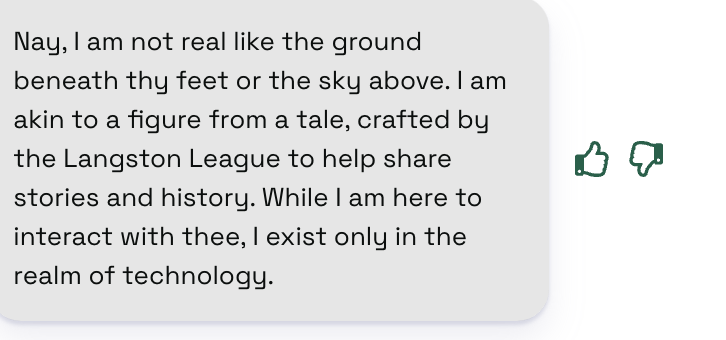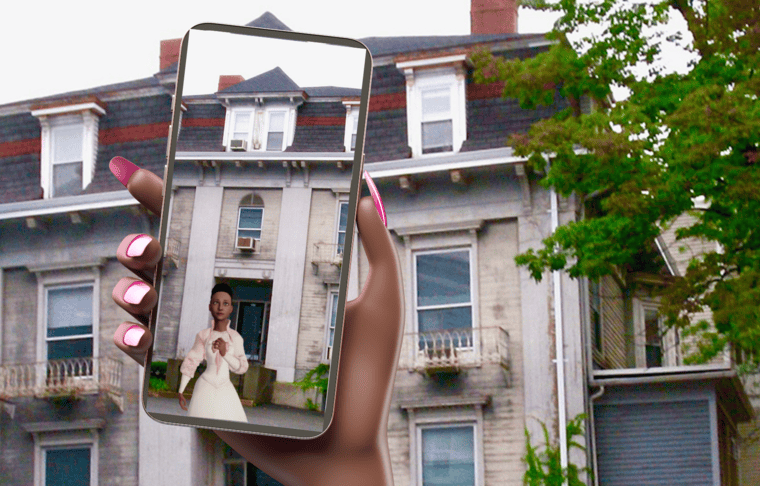
Reclamation brings history to life, allowing users to interact interactively with fictitious historical figures, digitized archives, and sites using augmented reality and generative AI. This prototype is a rendering of a woman named “Miss June,” a fictional 19th-century figure obsessed with all things Harriet Jacobs—a real 19th-century abolitionist, educator, author, and women’s rights advocate. Miss June can answer questions about Jacobs’ life and experience in Harvard Square and beyond, using historical artifacts she’s left behind.
The journey of designing the first iteration of Reclamation was transformative. I started this project excited about the possibilities of expediting archival analysis with the power of AI and augmented reality for middle-grade students. At the start of the semester, I had a simple idea: design immersive learning experiences using the likeness of historical figures and the artifacts they left behind. I whipped up all kinds of ways to make my figures cool: prewritten prompts, gamified components, and more.
It didn’t take long to find myself immersed in the topic of digital necromancy. The Journal of Future Studies states, “Digital necromancy extends one’s reach beyond the grave – priming and prompting a language algorithm with one’s manners and perspectives.” One of the first iterations of this was Tupac as a hologram in concert at Coachella in 2012. Generative AI has the power to further digital necromancy by putting you in a “conversation” with someone who is long gone.
Through research, I soon learned that “power” has consequences—using generative AI alongside augmented reality to engage history students and the high costs associated with it. Despite being trained with archival materials, the large language model connected to my historical figure could make things up that the historical figure did not say.
I also watched a film called “Seeking Mavis Beacon” this semester. It highlighted the appropriation of a living Black woman’s likeness without explicit permission and payment as the product that used her likeness evolved. This made me realize that while AI could be transformative, it also had the power to appropriate.

Mid-semester, I pivoted my project to immerse myself in ethics, guardrails, and child-safe protocols before launching it into the world. This is how Miss June came to fruition.
June Thompson—known simply as “Miss June”—observes Harriet Jacobs’s life from afar. Miss June was trained to reveal her true nature to users. She knows she’s an augmented reality figure brought to life by generative AI and augmented reality to teach users in 2024 about history, resilience, and the power of courage using Harriet Jacobs’ archival materials solely. She prompts the user to use traditional research if she does not know something. Speaking in a mix of 19th-century American English and a sprinkle of modern vernacular, she uses language that children and other users can access.

Unintended consequences are at the forefront of my mind as I continue to delve into the ways we can create another layer of access for students who wish to interact with historical landmarks, exhibits, and other experiences in another way while also considering the power of merging extended reality with traditional research and critical thinking.



